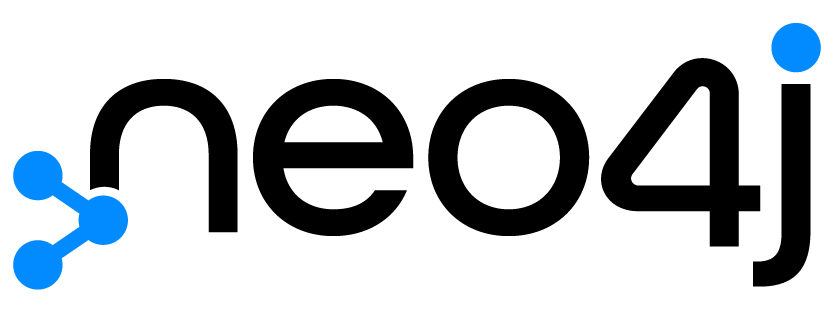
Hello everyone, and a warm welcome to our exciting journey into the world of Neo4j and knowledge graphs. In this course, we'll dive deep into Neo4j, the leading graph database platform that's transforming how we handle complex data relationships. Whether you're a data enthusiast, a developer, or just curious about cutting-edge technology, you're in the right place.
What is Neo4j?
Neo4j is a highly scalable graph database that treats data relationships as core aspects of its data model. Unlike traditional relational databases that use tables and rows, Neo4j uses graph structures with nodes, relationships, and properties to represent and store data. This structure allows Neo4j to efficiently handle complex queries involving interconnected data, making it ideal for applications requiring real-time insights from large, complex data sets.
The Property Graph Model
The property graph model is the underlying data structure used by Neo4j. It is designed to represent and manage data in a way that emphasizes relationships between data points. This model consists of three main components: nodes, relationships, and properties.

Nodes
Nodes are the primary entities in a graph. Think of them as the objects or items in your data set. For example, in a social network, nodes could represent people.
Labels: Nodes can have one or more labels that categorize them. For instance, a node representing a person might have a "Person" label.
Properties: Nodes can also have properties, which are key-value pairs that store additional information about the node. For example, a person node might have properties like name: "Alice", age: 30, and email: "alice@example.com".
Relationships
Relationships connect nodes and define how they are related. Unlike edges in traditional graphs, relationships in Neo4j have direction and type.
Type: Each relationship has a type that specifies its nature. For instance, a "KNOWS" relationship might connect two "Person" nodes, indicating a friendship.
Direction: Relationships have direction, shown as arrows, which provide context.
Properties: Relationships can also have properties. For example, a "PURCHASED" relationship might have a date property indicating when a purchase happened.
Properties
Both nodes and relationships can have properties, which are key-value pairs. These properties store additional data that enriches the graph model.
Key-Value Pairs: Properties are structured as key-value pairs. For example, a book node might have properties like title: "The Great Gatsby" and publishedYear: 1925.
The property graph model's schema-free nature offers flexibility and adaptability, allowing you to add new nodes, relationships, and properties on the fly.
Industry Applications
Neo4j is widely used across various industries due to its ability to manage and analyze connected data. Here are some popular use cases:
Banking and Finance
Fraud Detection: Neo4j helps uncover fraudulent patterns by analyzing connections between transactions, accounts, and entities.
Risk Assessment and Compliance: It aids in assessing risks and ensuring compliance with regulations.
Retail and E-commerce
Recommendation Engines: Companies use Neo4j to build recommendation engines that suggest products based on user behavior, preferences, and purchase history.
Telecommunications
Network Management: Neo4j is employed to map and manage complex network topologies, enabling efficient monitoring, troubleshooting, and optimization of IT infrastructures.
Healthcare and Life Sciences
Patient Data Management: Neo4j supports patient data management, research, and personalized medicine by analyzing relationships between patients, treatments, and outcomes.
Supply Chain and Logistics
Operations Optimization: Neo4j helps optimize supply chain operations by providing insights into supplier networks, transportation routes, and inventory management.
These examples highlight Neo4j's versatility and efficiency in handling complex queries, making it a valuable tool in diverse sectors.
Neo4j in the Database Landscape
Databases can be broadly categorized into two main types: relational databases and NoSQL databases.

Relational Databases
Examples: MySQL, PostgreSQL
Structure: Organize data into tables and are ideal for structured data and complex transactions.
Query Language: Use SQL for query operations and are widely used for applications with well-defined schemas.
NoSQL Databases
NoSQL databases are designed for flexibility, scalability, and handling unstructured or semi-structured data. They are categorized into:
Document Stores: Example: MongoDB
Key-Value Stores: Example: Redis
Column-Family Stores: Example: Cassandra
Graph Databases: Example: Neo4j
Neo4j falls into the graph database category within NoSQL databases. It stands out because of its focus on relationships between data points, making it particularly effective for use cases where data connectivity is crucial.
Getting Started with Neo4j
Installation and Setup
We'll cover everything from Neo4j setup and installation on Windows to exploring the Neo4j browser and setting up your initial data. We'll guide you through your options for setting up Neo4j, whether you're on the cloud, on-premises, or somewhere in between.
Introduction to Cypher Query Language
Cypher is Neo4j's powerful and expressive query language. You'll master it through a series of hands-on labs, starting with the general syntax of Cypher. We'll explore filtering techniques, aggregation, CRUD operations, and advanced features like MERGE, WITH, and RETURN.
Practical Use Cases
Shortest Path Lab: Learn how to find the quickest route between nodes.
Crime Investigation Use Case: Solve a mystery using Neo4j.
Graph Data Science Library: Understand the Graph Data Science library with a flight's data use case.
Advanced Topics
Memory Allocation Recommendations: Learn best practices for optimizing Neo4j performance.
Graph Data Science Library: Explore algorithms like centrality, community detection, node similarity, and pathfinding to unlock the hidden potential of your data.
Conclusion
By the end of this course, you'll have a comprehensive understanding of Neo4j, Cypher, and the Graph Data Science Library. You'll be equipped to build, query, and optimize knowledge graphs like a pro. Neo4j is transforming the way we handle complex data relationships, and with the skills you'll gain, you'll be ready to harness its full potential.
Stay tuned and happy graphing!
Comments